Persian Cat Breed, the Turkish Aristocrats
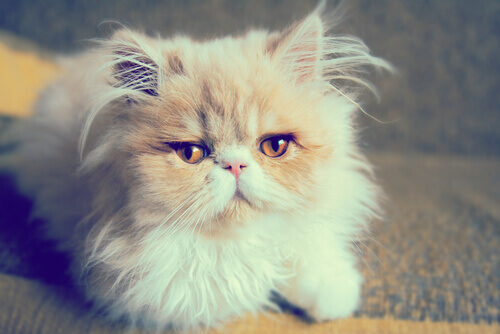
Nobody can deny the fact that the Persian cat breed is one of the most extravagant breeds of felines that exists. With their thick fur and flat faces, Persian cats are related to the aristocracy and are descendants of the Turkish Angora Cat. Find out more about them in this article.
History of the Persian cat breed
We don’t know for sure when these beautiful long-haired cats first came about. It’s believed that their ancestors were domestic pets since no wild breeds have a similar coat. The gene that gave them this characteristic is the result of its hybridization with Pallas’ Cat.
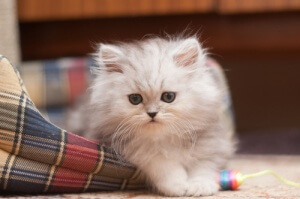
The earliest documented ancestors of the Persian cat breed were imported from the city of Khorasan. From present-day Iran, they were brought to Italy by Pietro della Valle in 1620. At that time, some were also brought from Angora— present-day Ankara, Turkey. The first specimens were gray and the next group were white.
They were cross-bred in this country and, later, some cats were taken to France. From there, they also went to England shortly after. The Persian cat breed is related to the aristocracy and nobility. Due to their delicacy, elegance, and behavior they were the usual choice of nobles.
Physical characteristics
One of the interesting characteristics of this pet is its size, and there are medium and large Persian cats. Its head is round and solid, with prominent cheekbones, a short muzzle, and large, bright eyes. Also, we can’t forget its characteristic flat nose. Additionally, their ears are small and have the shape of an inverted “v”.
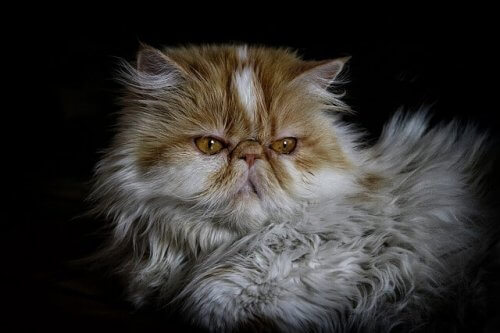
This breed of cat is unique because of its muscularity and robustness. In addition, they have a lot of long, silky, thick hair. Their tails are hairy and round at the end. Also, they can be a variety of different colors. For example, you can find some who are a single color (black, white, chocolate, red, cream, lilac or blue), others which are two-colored, and still others up to three colors.
Behavior and character
Their nickname is “sofa tigers”, because of their calm temperament. Also, they love to spend hours and hours sleeping or resting. Persian cats are smug animals by nature. However, they’re also calm, affectionate, personable, and they get along well with people and other animals. Did you know that these pets can even help with autism?
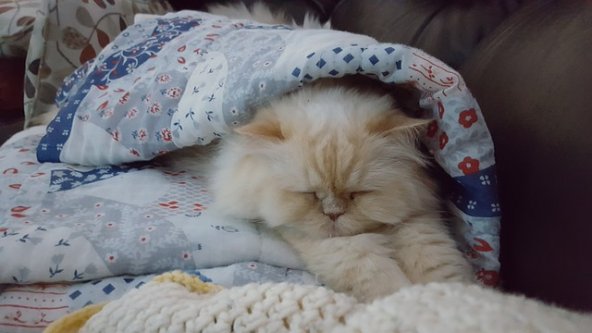
The Persian cat breed’s temperament makes it the perfect pet for a family. Since they come from domestic breeds, they don’t usually have the “wild instinct” that cats usually have. Also, they love being around their owners. They’ll follow you all over the place.
However, they don’t like games or physical activity very much, and they don’t like hunting. These cats prefer to stay near heat sources and to be admired by their owners. They’re an indoor cat, which is a result of all the luxury they experienced in the past. In short, this cat enjoys a quiet life.
Persian cat breed care
This breed of cat requires special care, which can make taking care of them a bit difficult. To start, you should know that gestation lasts a little more than two months and that they’ll have a small litter: no more than three. In many cases, they’ll need a cesarean section to reduce any risks. Also, kittens must stay with their mothers for three months.
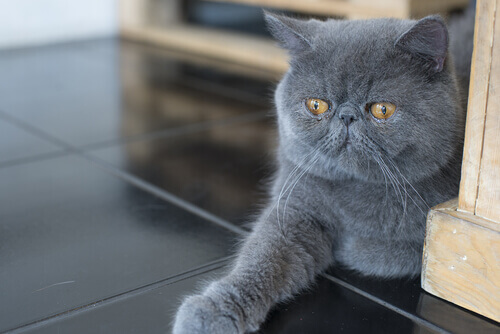
This cat isn’t ideal for people who don’t have a lot of free time during the day. They have to be brushed every day to prevent knots or hairballs from forming on their beautiful coat. Knots can be very annoying with so much hair, and so it’s best to keep them well-groomed.
This cat is prone to excessive tearing because of the shape of its face. Therefore, it’s important to clean the internal grooves of its eyes on a regular basis. This will help you avoid infections.
Diseases
Polycystic kidney disease is one of the typical diseases that Persian cats can suffer from. It’s a hereditary and genetic disease that affects the kidneys and can lead to kidney failure.
Another common problem with this breed is progressive atrophy in the retinas. This can cause them to go blind as they age. In addition, with a life expectancy of 15 to 20 years, it’s normal for them to suffer from several other problems.
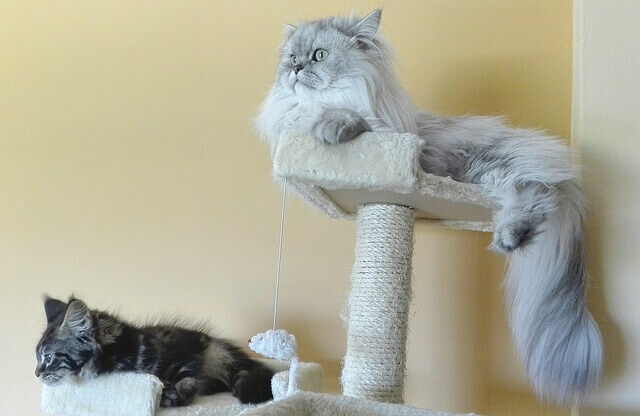
They can also have heart or respiratory issues when they’re older. While you won’t be able to do very much to prevent these problems, your cat will be able to live a long life if you take care of it. Your cat’s diet is another vital point that can delay the onset of complications.
Diet
It’s important to watch your cat’s diet at all stages of its life: from birth to maturity. You should know that premature cats need special care and a special diet to survive. Cat food helps provide them with the nutrients they need.
In general, you have to control and balance your Persian cat’s diet. Even though it’s a large animal, it can easily become obese due to its lack of physical activity. There are special types of cat food with large grains for this breed. In winter, you should increase their fat intake to maintain a healthy coat.
More about the Persian cat breed
Obesity is a serious problem in Persian cats. You should closely monitor your pet’s condition with regular vet visits. Also, remember that Persian cats are cats with character that you need to approach with respect. When you bathe your pet, bring the water on little by little. Although they don’t despise water entirely, they don’t like getting wet all of a sudden. You have to find a middle ground.
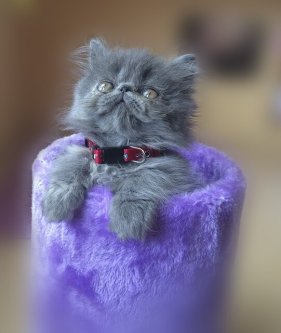
Also, be sure to check the water temperature before starting to bathe your cat. Then, after the bath, you should dry your Persian immediately. You’ll have to comb its fur to keep it in perfect condition. After all, that feline look isn’t easy to maintain. As the owner of one of these cats, you need to be sure you have the time and patience to provide this much care. Your pet will thank you!